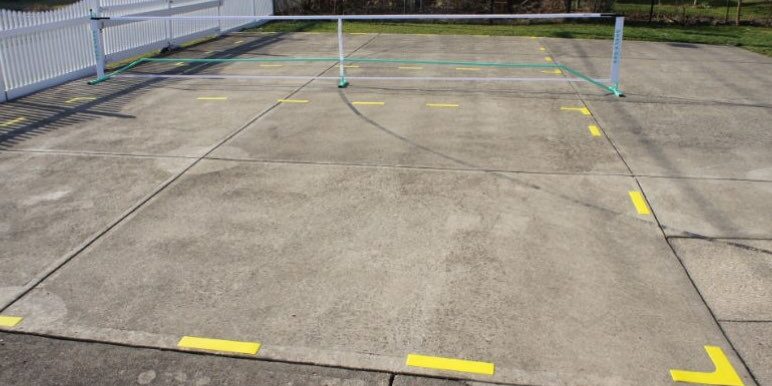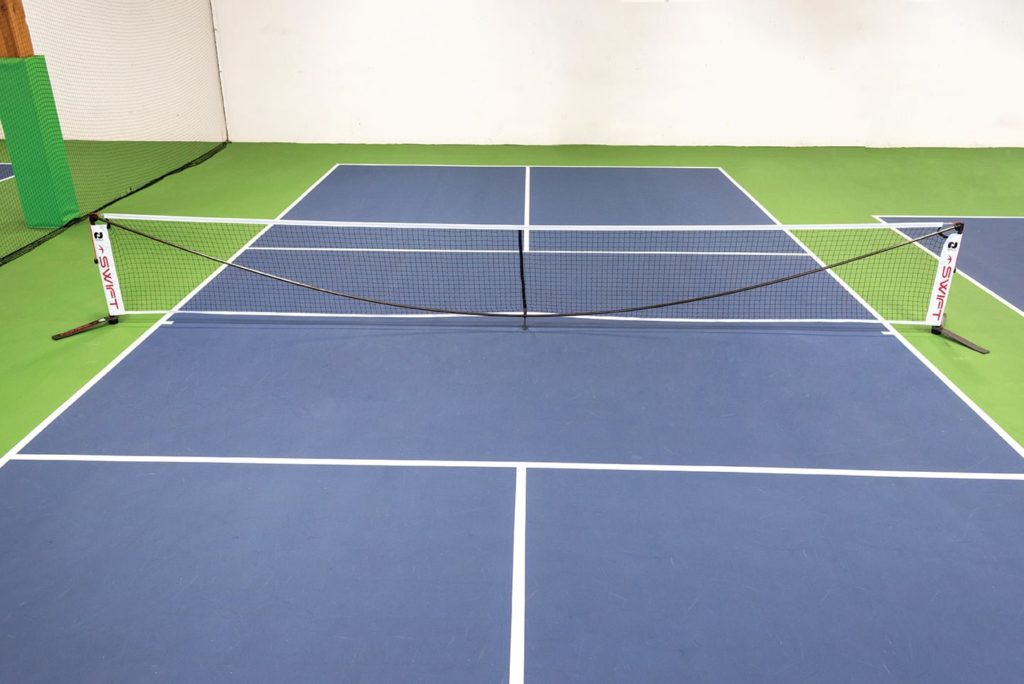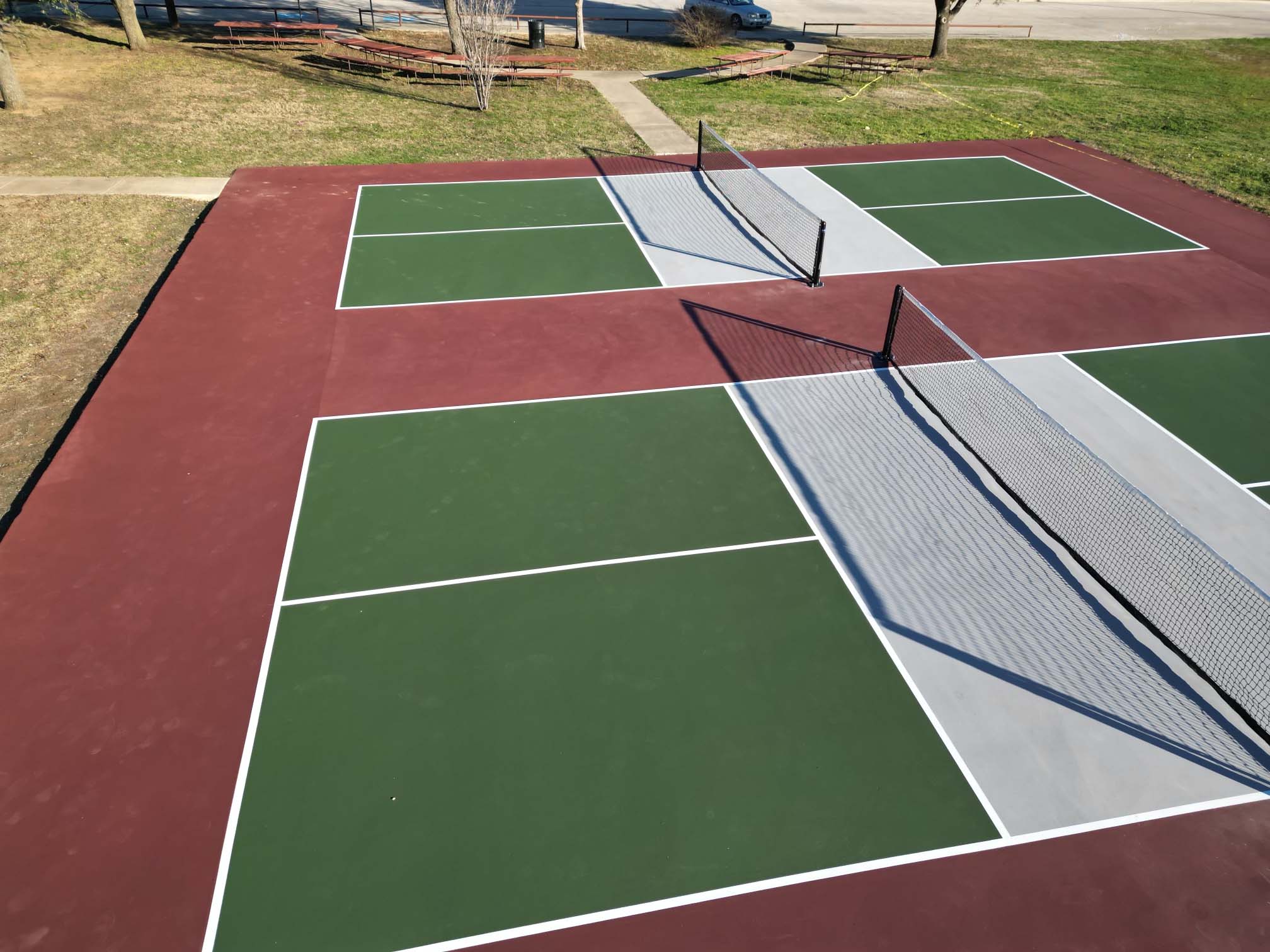Budget Friendly Pickleball Court Construction for Residences and Communities
Budget Friendly Pickleball Court Construction for Residences and Communities
Blog Article
Lasting Practices in Pickleball Court Building And Construction You Need To Know
As the popularity of pickleball proceeds to rise, so too does the need for sustainable techniques in court construction. The effect of these techniques prolongs far past the court itself.
Choosing Eco-Friendly Materials
Selecting environmentally friendly materials is a vital action in the building of lasting pickleball courts. The selection of sustainable products not only decreases environmental effect yet also boosts the longevity and performance of the court. Key materials include recycled rubber for the surface, which uses superb durability and shock absorption while diverting waste from landfills.
Furthermore, using in your area sourced products lowers transport exhausts and sustains local economic climates. Pickleball court construction. For instance, making use of indigenous woods for fence and seating can offer a lasting visual while ensuring resilience against the components.
Integrating absorptive products for court foundations can further add to sustainability by permitting all-natural water drainage and decreasing drainage. These selections not only safeguard regional environments however additionally promote much healthier play atmospheres.
Efficient Water Drainage Solutions
While the selection of environmentally friendly products is crucial, carrying out effective drainage remedies is just as crucial for maintaining lasting pickleball courts. Appropriate drain not just shields the court surface area from water damages yet likewise decreases disintegration and runoff, advertising ecological honesty.
Effective water drainage systems can consist of permeable paving, which enables water to penetrate the ground as opposed to pooling on the surface. This decreases the probability of standing water, which can bring about mold and various other upkeep issues. Additionally, incorporating strategically placed drain channels and swales can direct excess water far from the court area, ensuring a dry having fun surface area and protecting against dirt disintegration.
Utilizing native plants in the landscape design around the courts can additionally improve drain by taking in excess water and reducing drainage. These plants require less watering and advertise biodiversity, straightening with sustainable practices.
Moreover, it is crucial to routinely maintain the water drainage system to ensure its long-term efficiency. This includes clearing up particles and surveillance for clogs. By focusing on efficient drain remedies, pickleball court fitters can considerably contribute to the sustainability and longevity of the facility, ultimately profiting both gamers and the setting.
Energy-Efficient Lights Options
As the need for pickleball remains to expand, incorporating energy-efficient lighting alternatives into court design has become increasingly vital for sustainability. Traditional illumination systems often take in too much power, contributing to greater operational expenses and environmental effect. Therefore, embracing modern-day, energy-efficient innovations is necessary for both new constructions and restorations.
LED (Light Emitting Diode) illumination stands out as a premier option because of its longevity and power financial savings (Pickleball court construction). Contrasted to standard illumination, LEDs use around 75% less energy and can last up to 25 times much longer, substantially lowering maintenance costs. The directional nature of LED lights reduces light contamination, guaranteeing that illumination is concentrated on the court rather than surrounding areas.

Sustainable Surface Area Alternatives
Checking out sustainable surface alternatives for pickleball courts has actually acquired grip among building contractors and players alike. The emphasis on eco-friendly materials not just lines up with the growing ecological awareness yet likewise enhances the performance and durability of the courts.
One prominent option is making use of recycled rubber, which can be sourced from utilized tires. This material gives superb shock absorption, decreasing the threat of injuries for gamers while advertising sustainability. Furthermore, modular ceramic tiles made from recycled plastics provide one more practical choice. These tiles are simple to set up and change, and their flexibility enables numerous court arrangements.
Natural lawn courts are also becoming a sustainable selection, promoting biodiversity and lowering the warmth island result. However, they call for regular maintenance and water, which may not straighten with all sustainability objectives.

Water Conservation Techniques

One more effective strategy includes the installation of rainwater harvesting systems. These systems accumulate and store rainwater for usage in maintaining court surface areas and landscape design. This method not only preserves drinkable water yet view publisher site likewise reduces dependence on municipal resources.
Furthermore, using drought-resistant landscape design around the courts is vital. Indigenous plants call for much less water and are better adapted to local environment conditions, therefore lowering overall water usage. In addition, making use of efficient irrigation systems, such as drip watering, makes certain that water is provided straight to plant origins, lessening evaporation and waste.
Conclusion
Incorporating lasting practices in pickleball court building and construction significantly contributes to environmental preservation and source performance. Utilizing environmentally friendly materials, applying reliable drain remedies, and embracing energy-efficient lights alternatives can considerably decrease ecological influence. Discovering sustainable surface area choices and utilizing browse around this site water conservation methods enhance the total sustainability of these entertainment centers. By prioritizing these practices, the building of pickleball courts can line up with wider ecological objectives while advertising longevity and functionality within communities.
As the appeal of pickleball continues to climb, so as well does the demand for sustainable techniques in court building and construction.Choosing environment-friendly products is an important action in the building and construction of lasting pickleball courts. By focusing on energy-efficient lights options, pickleball court manufacturers can add to an extra lasting future while meeting the needs of gamers and stakeholders alike.Including lasting surface choices not just boosts the efficiency of pickleball courts however likewise paves the method for carrying out efficient water conservation methods.Incorporating sustainable practices in pickleball court building substantially adds to ecological preservation and resource performance.
Report this page